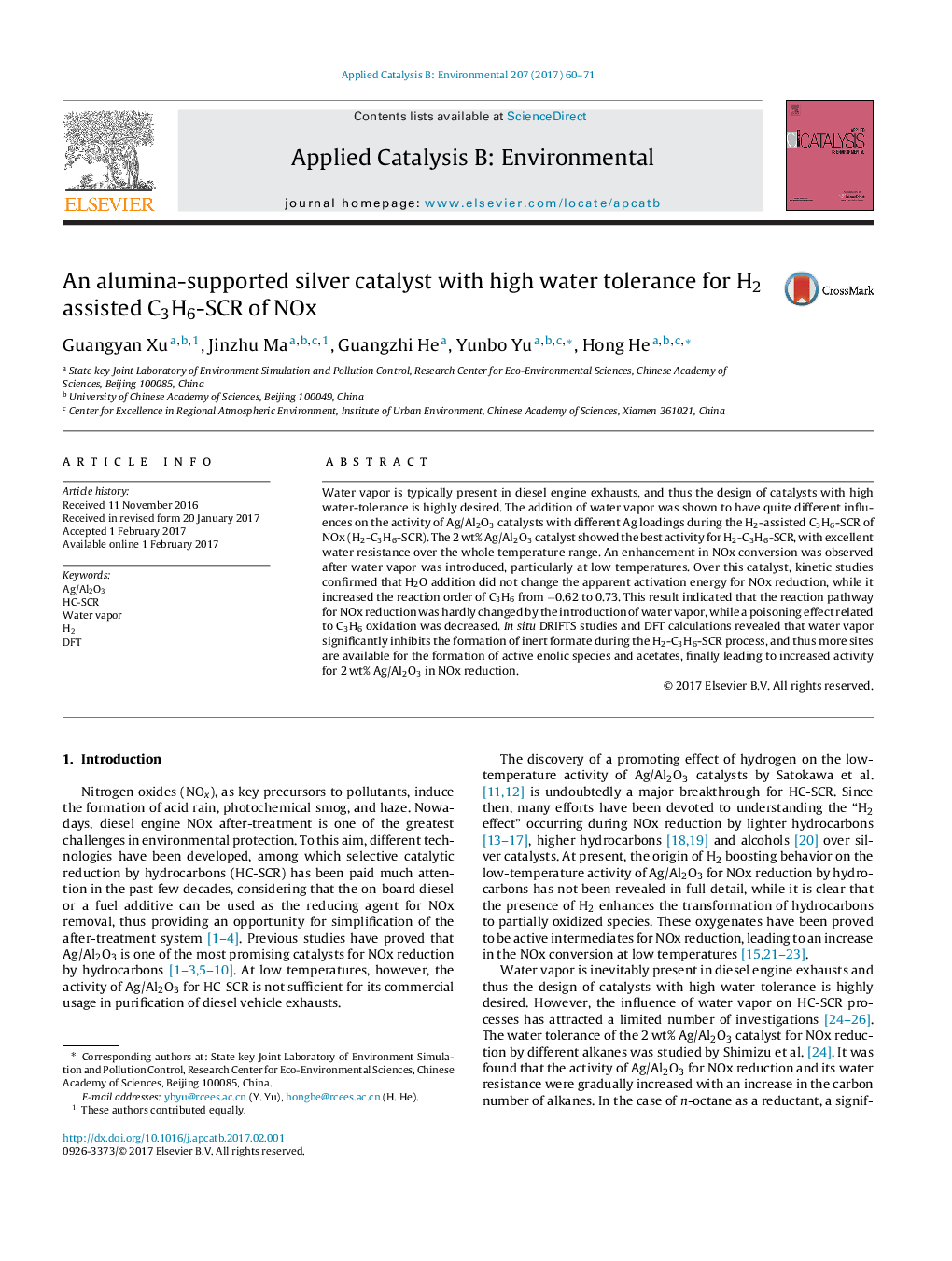| Article ID | Journal | Published Year | Pages | File Type |
|---|---|---|---|---|
| 6454048 | Applied Catalysis B: Environmental | 2017 | 12 Pages |
â¢The low-temperature activity of 2 wt% Ag/Al2O3 for H2-C3H6-SCR was enhanced by water vapor.â¢Over this catalyst, a poisoning effect related to C3H6 oxidation was suppressed by water vapor.â¢Without H2O, a serious accumulation of formate induced a poisoning effect for NOx reduction.â¢DRIFTS and DFT calculation revealed the role of water vapor in scavenging inert formate.â¢Thus, more surface sites are available for active intermediates, increasing de-NOx activity.
Water vapor is typically present in diesel engine exhausts, and thus the design of catalysts with high water-tolerance is highly desired. The addition of water vapor was shown to have quite different influences on the activity of Ag/Al2O3 catalysts with different Ag loadings during the H2-assisted C3H6-SCR of NOx (H2-C3H6-SCR). The 2Â wt% Ag/Al2O3 catalyst showed the best activity for H2-C3H6-SCR, with excellent water resistance over the whole temperature range. An enhancement in NOx conversion was observed after water vapor was introduced, particularly at low temperatures. Over this catalyst, kinetic studies confirmed that H2O addition did not change the apparent activation energy for NOx reduction, while it increased the reaction order of C3H6 from â0.62 to 0.73. This result indicated that the reaction pathway for NOx reduction was hardly changed by the introduction of water vapor, while a poisoning effect related to C3H6 oxidation was decreased. In situ DRIFTS studies and DFT calculations revealed that water vapor significantly inhibits the formation of inert formate during the H2-C3H6-SCR process, and thus more sites are available for the formation of active enolic species and acetates, finally leading to increased activity for 2Â wt% Ag/Al2O3 in NOx reduction.
Graphical abstractDownload high-res image (88KB)Download full-size image
